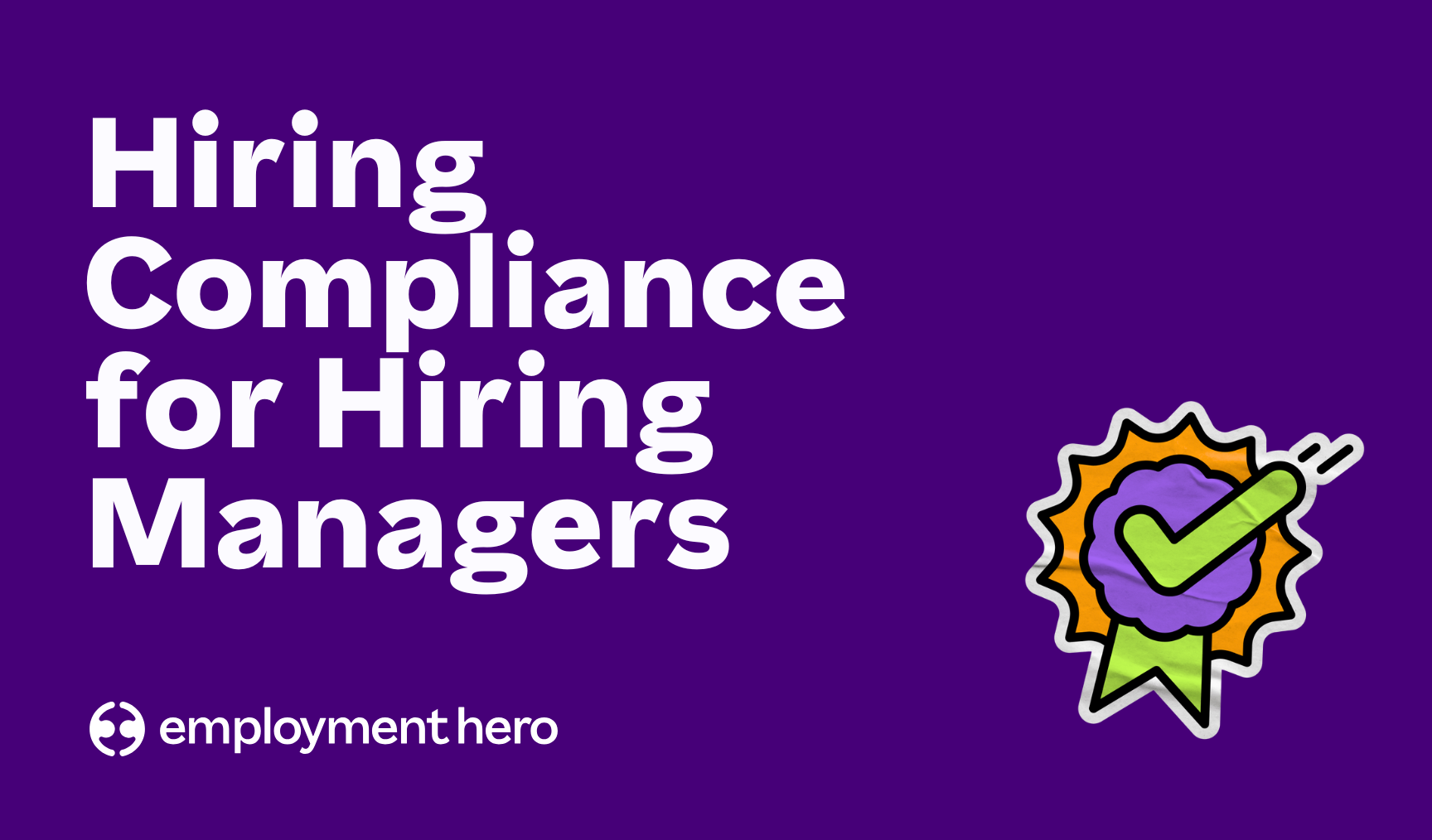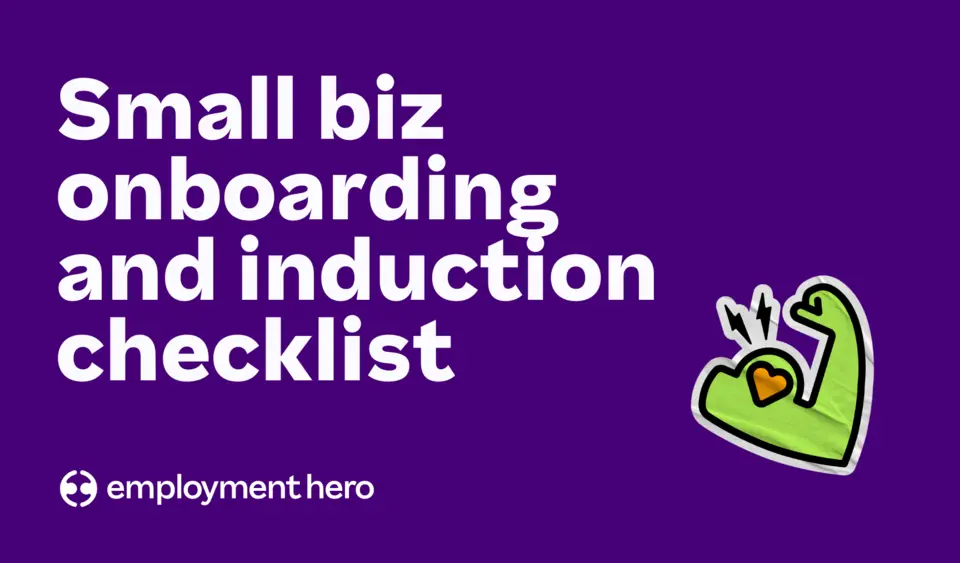Performance Improvement Plan Template [Free Download]
Published
Performance Improvement Plan Template [Free Download]
Do you have a team member who is falling behind? Maybe the quality of their work has taken a tumble or they’re not meeting the basic requirements of their role?
It’s a tough scenario for managers and employees to be in, but there are ways that you can improve the situation. A performance improvement plan is one of the most common tools that employers use to help their team members recover their performance.
How can this performance improvement plan template help?
This performance improvement plan sample can help you bring structure and consistency to this process. This worksheet is designed to help you and your employee find transparency in the situation, and make an actionable plan to move forward with.
In this employee action plan template, we’ve provided a structure to outline;
- A description of the underperformance occurring
- Required outcomes and areas for improvement
- Strategies to improve performance and the support leadership can provide
- Consequences if the performance objectives are not met
Download the template now.

A performance improvement plan is a valuable management tool. Photo by LinkedIn Sales Solutions on Unsplash.
What is a performance improvement plan (PIP)?
A performance improvement plan (PIP) is designed to help identify and work through current performance issues whereby an employee isn’t meeting company expectations.
The plan clearly outlines specific areas of concern, helps to clarify expectations, as well as notes the expected outcomes if the performance benchmarks are or are not met.
Performance improvement plans help employees improve within their roles, and they can also reduce turnover.
To further enhance your performance review process, consider using our Employee Performance Review Template Bundle. This bundle includes a self-evaluation and professional development template, providing a comprehensive approach to performance reviews.
Why use performance improvement plan templates?
A performance improvement plan template can lay out the requirements for the performance improvement plan in a consistent and transparent manner.
When you fill in every part of this template with your employee, they will know exactly what is expected of them to move forward. They will also be more aware of the support that is available, and how they can measure their progress.
For documenting and progressing your employees in the workplace, download our Professional Development Plan Template. This free resource helps HR managers create effective professional development plans.
Improve your performance review process
Looking for more general performance review resources? Download our free Guide to Performance Reviews.
Advantages and Disadvantages of Performance Improvement Plans (PIPs)
Performance improvement plans (PIPs) offer benefits and drawbacks that HR and managers should carefully weigh.
Advantages
- Fairness and Accountability – PIPs provide a structured, fair process for employees to improve performance with clear expectations, feedback, and support.
- Empowerment – Employees can take ownership of their improvement, often becoming stronger performers through accountability.
- Reduced Liability – A documented process protects organizations from litigation if termination becomes necessary.
- Cost and Time Savings – Addressing performance issues early improves productivity and reduces turnover, saving money in the long run.
- Improved Communication – Documented PIPs enhance transparency, clarifying expectations and fostering better communication between employees and management.
- Refined Job Roles – Creating PIPs often identifies gaps in job roles and clarifies outputs and expectations.
Disadvantages
- Time-Consuming – Each PIP must be tailored to the employee and situation, requiring significant time and effort to create and manage.
- Workflow Disruptions – While PIPs may temporarily disrupt workflows, they often result in long-term productivity gains by addressing role misalignments.
- Uncomfortable Conversations – Managers may find it challenging to conduct performance discussions effectively. HR must support managers with tools and guidance to ensure positive outcomes.
- Negative Perceptions – Employees may view PIPs as a precursor to termination, leading to disengagement, toxicity, or resignation. Framing PIPs as part of a culture of growth and self-improvement is critical to counter this perception.
By implementing PIPs thoughtfully and consistently, organisations can enhance performance and foster a culture of continuous improvement while mitigating potential downsides.
How to create a Performance Improvement Plan (PIP)
Follow these steps to create an effective performance improvement plan:
Step 1. Determine if a PIP is Necessary
PIPs require effort and time, so evaluate their necessity by asking:
- Is the employee valued?
- Can the performance issue be resolved?
- Are positive outcomes likely? If the answer is “yes,” proceed with a PIP.
Step 2. Involve the Employee
Engage the employee in the process to ensure buy-in and accountability. Discuss:
- Role expectations and areas for improvement.
- The employee’s ideas on how to improve and the support they need.
Step 3. Draft the PIP
Work with HR to create a detailed plan that includes:
- Definitions of acceptable performance and the gaps to address.
- Root causes of the issue.
- Clear, measurable objectives with SMART goals.
- Milestones, assessment criteria, and deadlines.
- Positive outcomes for the employee and the organisation.
Step 4. Identify Support and Resources
Determine what resources, training, or coaching will be provided.
- Collaborate with the employee to identify helpful support.
- Define budgets for necessary training or tools.
Step 5. Schedule Regular Check-Ins
Ensure progress by:
- Having HR monitor the manager’s follow-through.
- Scheduling regular employee check-ins as outlined in the PIP.
- Tracking milestones and providing feedback at specific intervals.
By following these steps, you can create a PIP that promotes accountability, growth, and positive outcomes.
How long should performance improvement plans go for?
Generally, a performance improvement plan will span eight to ten weeks from the plan’s start date, which is often marked by a meeting to discuss the plan. Giving this kind of timeframe can help spur the employee into action, rather than having the improvement plan feel like some kind of abstract future event.
Keeping a limit on the time frame and providing measurable objectives can help your employee meet expectations.
Halfway point evaluation
We strongly recommend checking in with your employee at the halfway point, four to five weeks in. When you do so, use the performance review plan template that you’ve filled in as a reference. Go through each point and talk about the employee’s progress, noting any further areas that they may need support in.

Performance improvement plan examples
Within our performance improvement plan templates you’ll find the best way to structure your staff performance improvement plan. In the first column, you should detail the problem, then provide actionable steps to address it.
Let’s look at a few common examples of what kind of issues might trigger an employee performance improvement plan, and how you might articulate them.
1. Often misses deadlines
The ability to meet deadlines is critical in many lines of work, so if deadlines are consistently being missed, this would be a fair cause for concern.
Within your performance improvement plan, make sure you’re specific about the deadlines missed and the impact to the business as a result.
For example;
You have missed several editorial print deadlines, notably on the 8th, 21st and 30th of November. This has caused stress for other team members who have had to provide last-minute content to fit the empty placements. It has also meant that we cannot stick to our overall editorial plans, which then need to be amended and updated.
From there, you can outline measurable steps to help the person set up an efficient workflow, and identify additional support required to improve.
2. Has received negative feedback from clients or customers
Customer and client satisfaction is everything to a business, so if you have a public-facing employee who is frequently receiving bad feedback, this is a significant problem.
As above, be specific about what kind of feedback has been received, and the consequences for the employee and the business.
For example;
You have received six negative reviews from customers during August and September, many of whom said that you did not speak to them in a respectful manner. This can affect your personal reputation and that of the business, causing our customers to lose trust and motivating them to take their patronage elsewhere.
An action item for this behaviour could include shadowing a more experienced customer-facing person or doing practice phone calls or conversations with a manager.
3. Delivering a low quality of work
Sometimes our quality of work can take a turn for the worse. Maybe we’re missing important details, not following guidelines or making lots of grammatical or data errors.
Specificity here would mean again providing clear examples of where they’ve gone wrong.
For example;
You have handed in three consecutive monthly reports with incorrect sales data. This has had a negative impact on strategic decision making throughout the business, and has led to incorrect reporting to senior leadership. This is a high risk to business operations.
From here, you may have someone take an additional look at the person’s reporting before they submit it, or have the person examine their workflows to see where they’re going wrong.
Make sure your team members know that they have your support. Photo by Christina @ wocintechchat.com on Unsplash.
To support your employees’ personal and professional development, consider downloading our Employee Coaching Plan Template. This free template provides structured coaching sessions to help employees overcome challenges and reach their full potential.
How to create a performance improvement plan
Issuing an employee improvement plan is no fun for the employee or the manager involved.
It’s important to remember that, in almost all circumstances, poor performance isn’t intentional. Never discuss performance issues when you are angry, or you lose any chance of a constructive conversation and quickly turn your team member into a ‘flight risk’ employee.
Employees who are performing badly need your support to improve. Here are some ways that you can help struggling employees get back on their feet.
Try to identify what’s causing the poor performance
If poor work performance isn’t intentional, what could be driving it?
It’s always better to treat the cause, not the symptoms. During your performance improvement plan meeting, it’s important to try to identify the root cause of the problem.
Management expert Bernard Marr wrote about the seven common causes of poor performance:
Resources
Does your team member lack the tools, equipment or time to complete a task? Then it’s likely that a lack of resources is leading to a slow in their work.
Obstacles
Is there a lot of red tape within your business that stops things from moving forward? Maybe your interdepartmental relationships are slowing progress and your employee doesn’t know how to navigate them.
Skills
A lack of skills and knowledge could be stopping your team members from performing. Perhaps they were given a new role or responsibilities without additional training, or they need some mentorship to help them learn the ropes.
Expectations
A lot of the time, it’s simply a lack of understanding that can be the culprit. If the employee doesn’t understand the company’s expectations or what is critically required of them in their role, they’re never going to catch up.
‘No carrots’ (a lack of reward and recognition)
Reward and recognition is critical to keeping employees motivated and performing well. If their progress milestones and achievements consistently go unnoticed, it’s very likely that they will disengage from their work.
Need a helping hand with your recognition strategy? Download our complete guide to reward and recognition.
‘No sticks’ (a lack of accountability)
As a manager, do you often let sub-par work slide? Do you feel like you don’t have time to give feedback and it’s ‘good enough’. You’re actually doing your employees a disservice. Performance improvement plans can be avoided if managers give constructive feedback regularly.
Burnout
Burnout is a global issue, with our Wellness at Work Report finding that 53% of employees had recently experienced burnout. This could be a sign that the employee needs a different approach to how they work.
Personal reasons
This reason was not on Marr’s original list, but we feel it’s worth flagging. If your employee has recently gone through a difficult personal event it may be causing them to disconnect from their work.
For example, if someone is experiencing grief from the death of a loved one, they may be feeling distracted or have a lack of mental capacity for work.
This doesn’t mean that you can’t talk to them about their performance or give them a performance action plan, but it does give you as a manager valuable context to their current challenges. You can then organise mental health resources or additional accommodations that might be required.
Is someone on your team experiencing grief? Support them in a meaningful way by downloading our Leader’s Guide to Grief.
Speak kindly and with empathy
Remember the old saying, you catch more flies with honey than with vinegar?
Walking into a performance improvement plan meeting, the last thing you want to do is start an argument or make the person receiving feedback cry. Try to remove any sense of frustration or anger, this person needs your help to improve – the only outcome of making them feel guilty or upset will be further disconnection from you.
Give honest feedback in a kind manner
Be honest with the person when it comes to your feedback and expectations, but deliver it in a kind way. Put yourself in their shoes and listen carefully when they tell you what they need to improve.
Be there to support their improvement
The whole point of an employee performance improvement plan is to give that struggling employee the best chance of success.
If you give your team member a performance action plan but then you don’t do anything to assist them, it’s unlikely that they’ll be able to meet their improvement goal. Although you should have your formal halfway point progress evaluation, it’s also important to host regular check ins and give helpful feedback.
Are you hosting 1:1 meetings?
Do you have a 1:1 meeting system in place with them already? If not, start conducting these meetings weekly. Open the conversation to understand how their work is going, and offer them any helpful tips or advice to achieve their goals.
Not sure how to get started? Download our free 1:1 meeting template.
Regular 1:1 meetings are essential for employee success. Photo by Christina @ wocintechchat.com on Unsplash.
To set clear and achievable goals for your employees, download our Employee Goal Setting Template. This free guide helps employees define their career goals for the next decade, providing tips on planning and setting goals effectively.
What happens if an employee improvement plan doesn’t help?
Unfortunately, despite everyone’s best efforts, there will be some occasions where the employee fails to improve after being issued a performance improvement plan.
During the performance improvement plan meeting, you as a manager need to be extremely clear on how you will measure success around improvement and give clear expectations on what the consequences will be if your team member fails to improve.
Generally, a possible termination of employment is the outcome of a failed performance improvement plan. However, it’s important to note that this should always be a last resort outcome. You want to reduce staff turnover as much as possible within your business.
Stop bad performance in its tracks
In an ideal world? We’d stop bad performance as soon as it starts to appear and avoid a performance improvement plan altogether.
The best way to do this is to improve your performance management process. Ask yourself these questions to run a quick evaluation;
- Are you regularly giving feedback to your employees (and encouraging them to give feedback back to you)? Don’t rely on once yearly performance reviews, keep feedback moving in a constant loop.
- Are you setting clear expectations with a performance framework like Objectives and Key Results (ORKs)?
- Are you using a performance management process template to implement personal improvement plans effectively?
- Are you using performance management software to create a clear record of your employee’s feedback and success?
If you’d like to learn more about how you can make performance management a key part of your team operations, learn more about our high-impact performance management software.
Book a demo with one of our business specialists to find out more.
Download this Performance Improvement Plan Template for free now.
Related Resources
-
 Read more: Recruitment compliance do’s and don’ts: Hiring compliance for hiring managers
Read more: Recruitment compliance do’s and don’ts: Hiring compliance for hiring managersRecruitment compliance do’s and don’ts: Hiring compliance for hiring managers
Published 1 min read Having responsibility for a business’s approach to hiring can be daunting: how do you ensure all…
-
 Read more: Hiring Issues Holding You Back? The Business Owner’s Guide to Competing for Top Talent
Read more: Hiring Issues Holding You Back? The Business Owner’s Guide to Competing for Top TalentHiring Issues Holding You Back? The Business Owner’s Guide to Competing for Top Talent
Published 1 min read Hiring great people is one of the most powerful ways to grow your business – but…
-
 Read more: Dodge Thousands in Fines, Keep Great Staff: Onboarding Checklist
Read more: Dodge Thousands in Fines, Keep Great Staff: Onboarding ChecklistDodge Thousands in Fines, Keep Great Staff: Onboarding Checklist
If you run a business with under 10 staff, this onboarding checklist will help you get the most out of…










